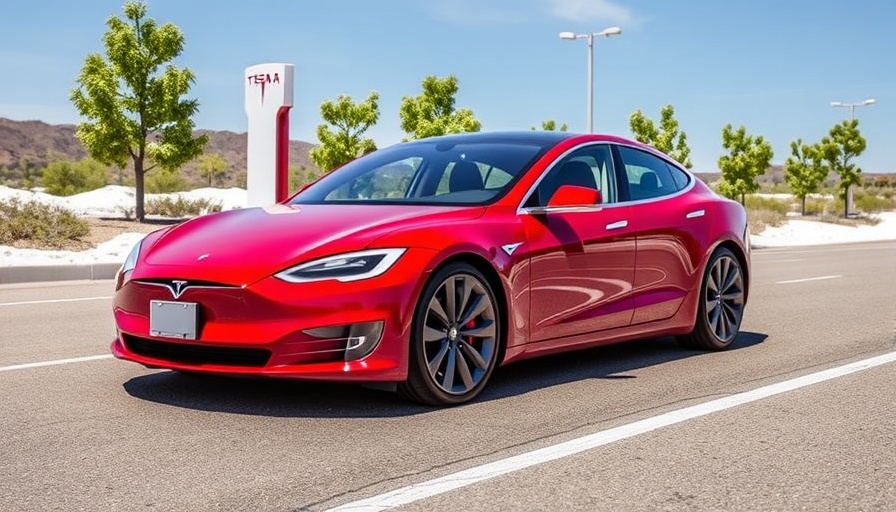
Understanding Tesla's Sales Surge: A Closer Look
Tesla recently reported impressive sales figures for the third quarter of 2025 with 497,099 vehicle deliveries, a significant number that has sparked excitement among many news outlets. However, this figure represents only a 7.4% increase year-over-year, considerably lower than the explosive growth seen by competitors like Volkswagen and Ford, which boasted increases of over 30% during the same period. Tesla's performance may sound commendable at first glance, but a deeper examination reveals reasons for concern.
The Facade of Growth: Context Matters
Amid headlines praising Tesla's sales record, it’s crucial to analyze the broader context. The sales figure is only marginally higher than its previous record of 495,570 deliveries set in Q4 2024 — a mere 0.3% increase. This raises questions about Tesla’s capability to sustain growth, especially as the company faces stiff competition. With other automakers ramping up their electric vehicle (EV) production and innovating rapidly, Tesla's previously commanding market share appears to be slipping. Brands like Volkswagen and Hyundai are capturing consumer interest and trust, underpinned by their strong growth statistics.
The Impact of the EV Tax Credit
The impending expiration of the U.S. EV tax credit drove many buyers to rush and purchase Tesla vehicles ahead of the deadline. This spike in sales is not necessarily indicative of strong, sustainable consumer demand but rather a response to an external incentive. Following the expiration of the tax credit, analysts and automotive experts speculate whether Tesla can maintain sales momentum in the upcoming quarters without such incentives.
Comparing Apples to Oranges: Competition Analysis
While Tesla has seen an uptick in sales, it's essential to juxtapose this growth with the industry's overall performance. Volkswagen experienced an astonishing 231% year-over-year growth in the same quarter, while Ford's EV sales increased by 30%. Such statistics highlight that Tesla’s growth is not only less impressive in magnitude, but also less indicative of market trends, especially as consumers explore alternatives that offer newer models or advanced features.
Looking Ahead: What Lies in Store for Tesla?
The outlook for Tesla is murky. Analysts suggest that fundamental changes are necessary for the company to regain a competitive edge and attract more buyers. Despite reaching a new sales record, Tesla's future growth may hinge on innovative offerings, improved production strategies, and resolving consumer concerns centered around the company’s leadership and product range. With consumer sentiment evolving post-tax credit, Tesla’s next steps will be critical in defining its trajectory in the ever-competitive EV market.
Concluding Thoughts: Navigating the Future of EVs
In a rapidly changing market fueled by consumer innovation and environmental responsibility, Tesla’s tech-savvy consumers are increasingly evaluating their options. Understanding the long-term value versus immediate headlines is essential for potential buyers and investors. The challenge for Tesla now lies in transforming this record-setting quarter into a trend, rather than a rare achievement. Staying informed and adaptable will be crucial as we watch how this iconic brand navigates an evolving automotive landscape.
 Add Row
Add Row  Add
Add 




Write A Comment